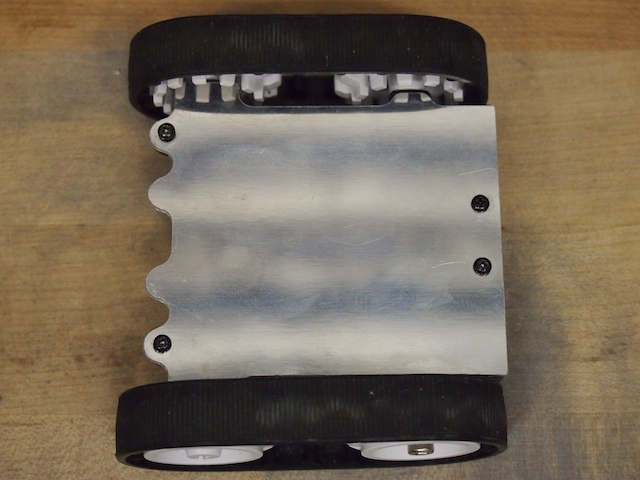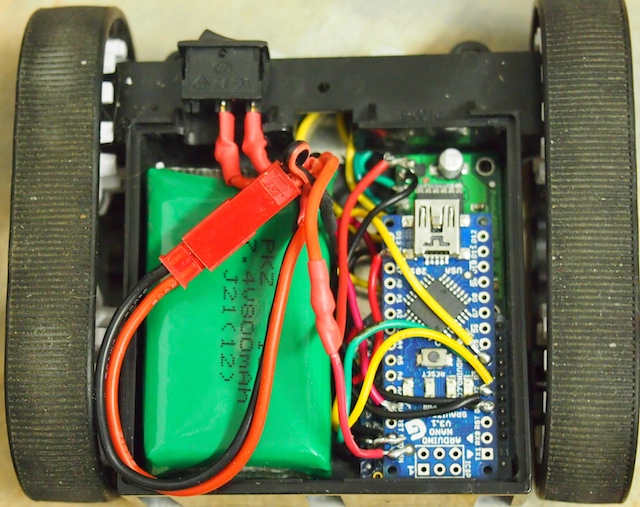
by Camille | Robots, Slider, Workshop Blog
This is Tinybot. About 3″ long and just 1.5″ high, this is one of the smallest robots we’ve ever built. Starting with a Pololu Zumo drivetrain, we set out to see if we could get all the components of the robot INSIDE what was originally its 4 AA battery compartment. We used our CNC to make a cool aluminum top plate. Two tiny gear motors drive the rubber treads. We cut the pins off an xbee radio and soldered it directly to an Arduino Nano’s 3V pin and digital pins so that we didn’t need to waste space with an adapter board or wires. The robot also includes a tiny motor controller, a little 800 mAh 7.4V LIPO battery, and a rocker switch. This neat little robot works beautifully. It zips around with incredible agility, either via xbee-based remote control or through a pre-programmed autonomous pattern. It can drive forward, backward, turn, rotate, and even drive upside down. We built this robot quite a while ago and are just getting around to posting it now, but it was this little guy that gave us the confidence to know that we could build small intricate robots like Lunokhod and Mini Mars Rover.

Top view of our Tinybot with our custom CNC-machined aluminum top plate.

The Tinybot with the aluminum plate removed. The green thing on the left is the tiny LIPO battery. The blue thing is an Arduino Nano without headers. The motor controller circuit board and the hacked down Xbee module are laying flat below that, stacked in layers.

Tinybot

by Camille | Workshop Blog
Recently, we were asked to build a second Mars Rover for the New York Hall of Science. The idea is to have a backup for the first one, and also to have a rover that can be taken off site for demonstrations. The new robot is purposefully very similar to the first one, but we couldn’t help making a few improvements along the way. We designed our very first custom circuit board, which we call the Mars Rover Shield. The shield fits into the header pins on top of the Arduino Mega. The shield’s purpose is to encapsulate the complexity of wires, resistors, screw terminals and other elements. After completing the design using Eagle software, we uploaded it to Sunstone.com and had them make the blank board for us. When the blank board arrived, my sister Genevieve soldered all the components into place. There were 165 solder points in all, but she’s quick and accurate! She did it in a matter of minutes! To our amazement, it works perfectly. Here is the finished product. Thinking about what it’s going to do for our robot, we think it’s a thing of marvelous beauty!




